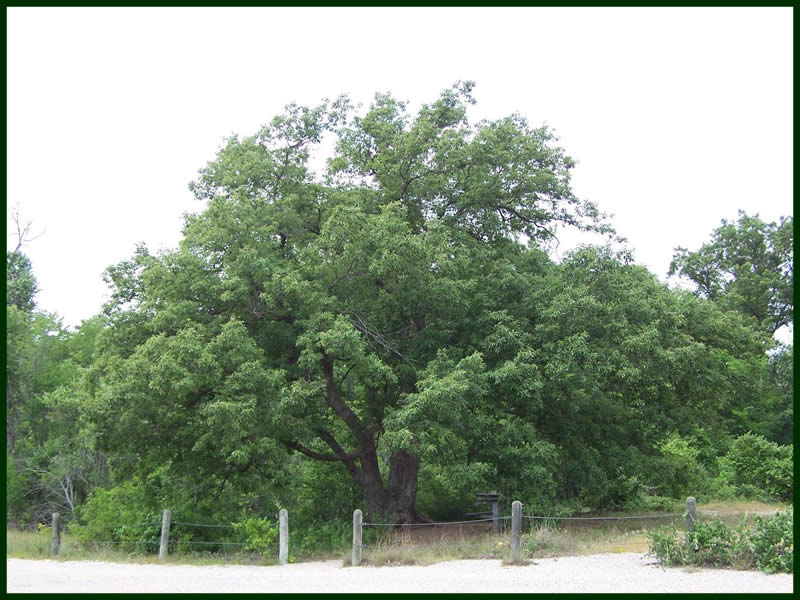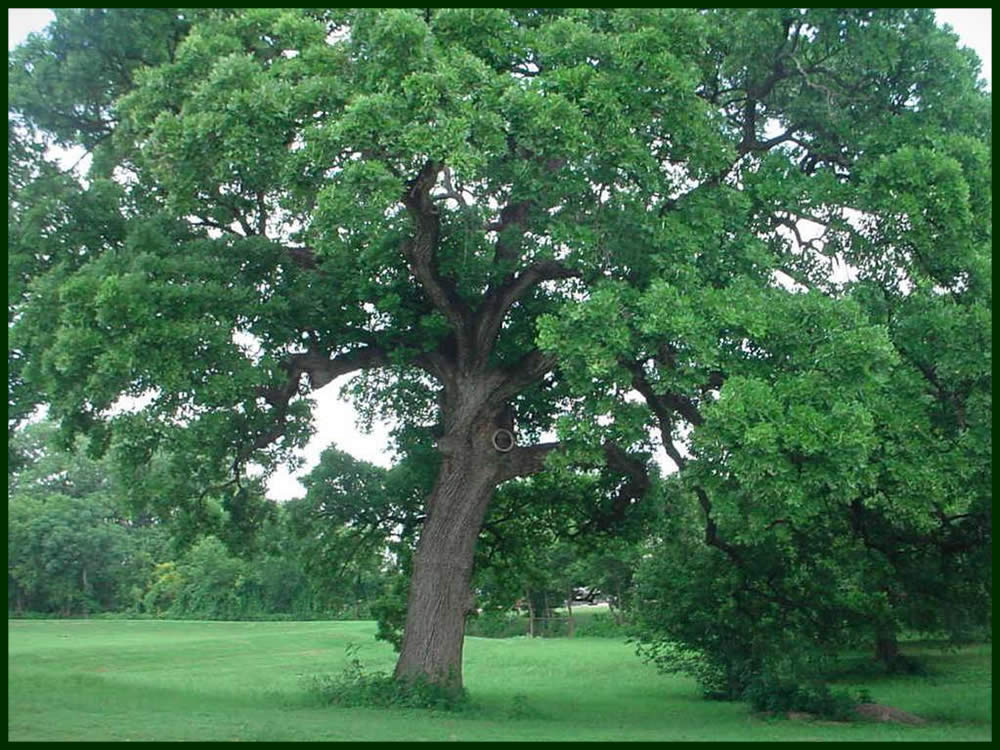By David Wall, Mount Pleasant Master Gardener
When a family member decides it’s time for a new yard shade tree, the next step usually involves a trip to local stores, whose employees may or not know much about what’s available and is best for your yard. The three items to consider are usually fast growth, quality, and durability. If possible, stay away from fast growth and look for quality and durability.


A huge favorite is the live oak, a tree that from a forestry standpoint I don’t like. Unless carefully groomed, major limbs will be 4-5 feet above ground level, stretching over into the neighbor’s yard, with such dense growth, even grass has difficulty surviving underneath.
I’m a big fan of oaks, and three great ones are Shumard, Chinquapin, and bur oak. All are 50 feet high and wide. Bur oaks do better in the country where the acorn (golf ball) size won’t be a problem, and will attract deer! White oaks are magnificent and taller, but slow growing. Post oaks, for me, are just not a good shade tree. They’re beautiful, but don’t even like grass growing
underneath. With connected roots, taking one down may cause the loss of others connected close by or 100 feet away! Overall, it’s just hard to beat a Shumard oak, which, by the way, grows fairly fast.
Pecan trees make great shade trees. Pruning to keep limbs at least 4-6 feet above ground makes mowing lawns easier and lets sunlight in for grass growth.
A beautiful tree resembling a pecan is the Golden raintree. It’s fast growing, matures in 4-7 years, and has the best-looking flowers (yellow) and seed pods of any tree. This is an urban tree eventually 40 feet high and wide, but generates so many viable seeds, it can become invasive in rural areas.
Don’t overlook the cedar elm and Chinese pistachio.








